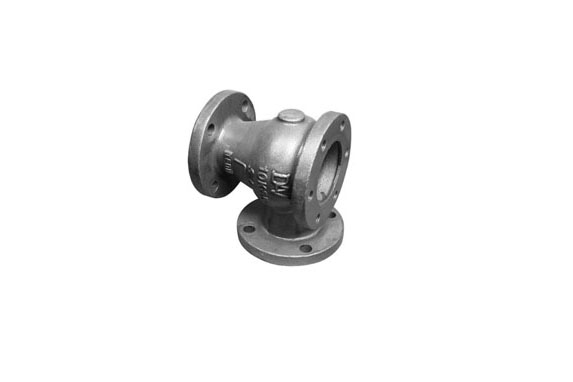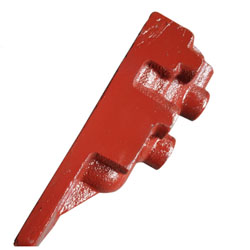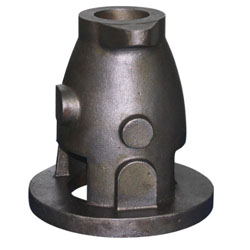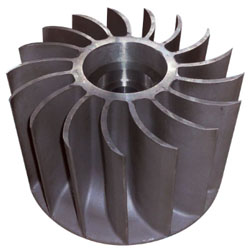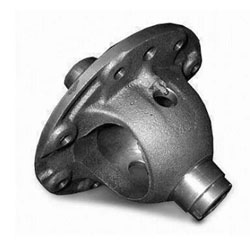Marine Hardware
- Leehwa Casting was established in 1996, it produces Clay Sand Casting.
- It is one of the most professional Sand Casting Manufacturers and Suppliers.
- Leehwa Casting provides 5 years sand casting Warranty.
- Leehwa Casting is the top sand casting manufacturers in China.
- Leehwa Casting is the best sand casting Manufacturers for sand casting.
Your Premier
Marine Hardware Manufacturers and Suppliers
Sand Casting
Sand Casting factory from Dongying, China,more about steel casting Products and clay sand castings from Leehwa Casting.
Sand Casting
Sand Casting factory from Dongying, China,more about steel casting Products and clay sand castings from Leehwa Casting.
Sand Casting
Sand Casting factory from Dongying, China,more about steel casting Products and clay sand castings from Leehwa Casting.
Sand Casting
Sand Casting factory from Dongying, China,more about steel casting Products and clay sand castings from Leehwa Casting.
For more than 30 years, Leehwa Casting only do one thing, it produce sand casting products: Investment Casting. It is one of the most professional suppliers and manufacturers in Shandong ,China. Leehwa Casting has the advanced technology and machinery to make sand casting ranks best in quality. Leehwa Casting casting ranks on top in Chinese sand casting manufacturers. We help many customers to make their sand castings. and finished more than 10000 tons sand castings in 2019. We have a wide range applications on the sand casting products. Contact us now for quotation.
Send us your requirements, Let Huifeng support you.
Marine Hardware: The Complete Guide for Importers and Buyers
Investment casting, also known as lost-wax casting, is a highly versatile and precise casting process used to create complex metal components.
The success of investment casting relies not only on skilled craftsmanship but also on the utilization of modern and efficient equipment.
This article explores the advancements in investment casting equipment, including the latest technologies and key considerations for selecting and utilizing such equipment.
- Overview of Investment Casting Process: 1.1 The Investment Casting Process: Provide a brief explanation of the investment casting process, highlighting its advantages, applications, and the types of components produced. 1.2 Historical Perspective: Discuss the historical development of investment casting equipment, tracing its evolution from traditional manual methods to automated systems.
- Importance of Investment Casting Equipment: 2.1 Precision and Reproducibility: Explain how investment casting equipment plays a crucial role in achieving precise and reproducible casting results, minimizing variations and defects. 2.2 Efficiency and Productivity: Highlight how modern equipment enhances the efficiency and productivity of the investment casting process, enabling higher production rates and reduced lead times. 2.3 Cost-Effectiveness: Discuss the cost benefits of investing in advanced equipment, considering factors such as material utilization, labor costs, and overall process optimization.
- Key Components of Investment Casting Equipment: 3.1 Wax Injection Systems: Explore the advancements in wax injection systems, including automated wax pattern production, consistent wax flow control, and the integration of robotics for improved efficiency. 3.2 Shell Building Systems: Discuss the latest developments in shell building equipment, such as automated shell coating, drying, and curing processes, as well as advancements in shell removal techniques. 3.3 Furnaces and Heat Treatment Equipment: Highlight the importance of advanced furnaces and heat treatment equipment for precise temperature control, uniform heating, and controlled cooling to achieve desired mechanical properties. 3.4 Pouring and Casting Systems: Explain the advancements in automated pouring and casting systems, including the use of robotic arms, computer-controlled pouring, and real-time monitoring for quality control.
- Considerations for Selecting Investment Casting Equipment: 4.1 Production Requirements: Assess the specific production requirements, such as component size, complexity, and production volume, to determine the suitable equipment capacity and capabilities. 4.2 Process Control and Monitoring: Emphasize the significance of equipment that allows for precise process control and real-time monitoring of critical parameters, enabling early defect detection and quality assurance. 4.3 Maintenance and Support: Discuss the importance of considering equipment maintenance requirements and the availability of technical support, spare parts, and training from the equipment manufacturers. 4.4 Cost and Return on Investment: Consider the initial investment cost, operational costs, and the potential return on investment when selecting investment casting equipment, aiming for long-term profitability.
- Emerging Technologies in Investment Casting Equipment: 5.1 Additive Manufacturing (3D Printing): Explore the integration of additive manufacturing techniques in investment casting, allowing for the production of intricate patterns and molds with improved accuracy and shorter lead times. 5.2 Digitalization and Automation: Discuss the role of digitalization and automation in investment casting equipment, including the use of simulation software, artificial intelligence, and robotics for process optimization and efficiency. 5.3 Quality Control and Non-Destructive Testing: Highlight advancements in quality control equipment, such as real-time monitoring systems, non-destructive testing techniques, and 3D scanning for accurate dimensional analysis.
- Industry Case Studies: 6.1 Aerospace and Defense: Provide examples of investment casting equipment used in the aerospace and defense sectors, highlighting the criticality of precision, quality, and repeatability in component manufacturing. 6.2 Automotive: Discuss the advancements in investment casting equipment utilized in the automotive industry, focusing on the production of lightweight and complex engine components.Training and Skills Development: 7.1 Operator Training: Emphasize the significance of providing comprehensive training programs for operators to effectively utilize investment casting equipment, ensuring optimal performance and minimizing errors. 7.2 Continuous Learning: Discuss the importance of staying updated with advancements in investment casting equipment through participation in industry conferences, workshops, and collaborations with equipment manufacturers.Maintenance and Upkeep: 8.1 Preventive Maintenance: Highlight the importance of implementing regular preventive maintenance schedules to ensure the longevity and reliability of investment casting equipment. 8.2 Equipment Calibration: Discuss the significance of periodic calibration of equipment to maintain accuracy and consistency in the casting process. 8.3 Spare Parts and Inventory Management: Address the need for maintaining an inventory of critical spare parts and establishing effective inventory management systems to minimize downtime.
- Environmental Considerations:9.1 Energy Efficiency: Discuss the advancements in investment casting equipment aimed at improving energy efficiency, such as heat recovery systems and optimized furnace designs. 9.2 Waste Management: Address the importance of implementing proper waste management practices, including the recycling and disposal of materials used in the investment casting process.
- Conclusion:
Investment casting equipment has undergone significant advancements, revolutionizing the precision, efficiency, and productivity of the investment casting process. From wax injection systems to shell building, furnaces, pouring, and casting equipment, each component plays a critical role in achieving high-quality castings.
When selecting investment casting equipment, factors such as production requirements, process control capabilities, maintenance support, and cost considerations should be carefully evaluated.
By embracing emerging technologies, investing in training programs, and prioritizing maintenance and environmental considerations, importers and manufacturers can maximize the benefits of modern investment casting equipment and stay ahead in the competitive market.
By staying informed about the latest developments in investment casting equipment and leveraging its capabilities, importers and manufacturers can ensure consistent quality, cost-effective production, and competitive advantages in the ever-evolving field of investment casting.

